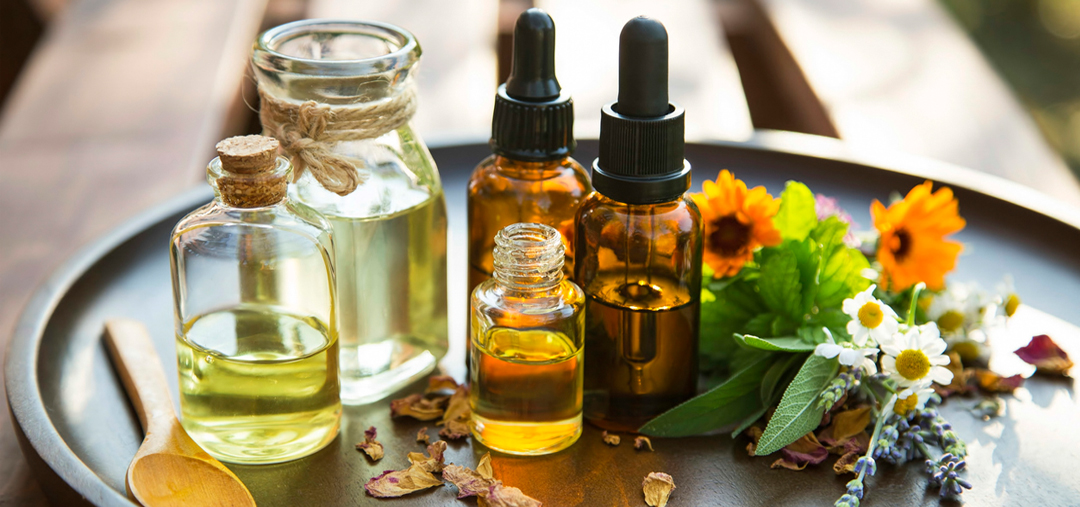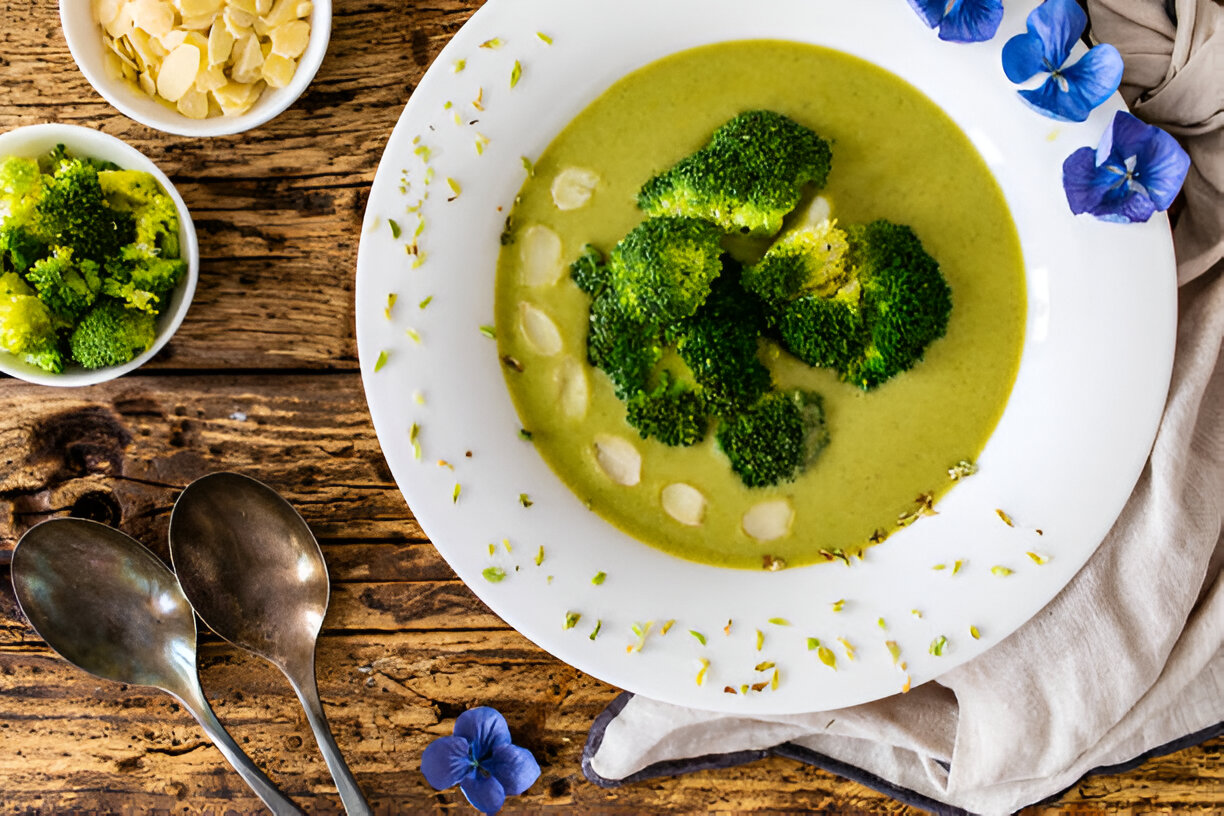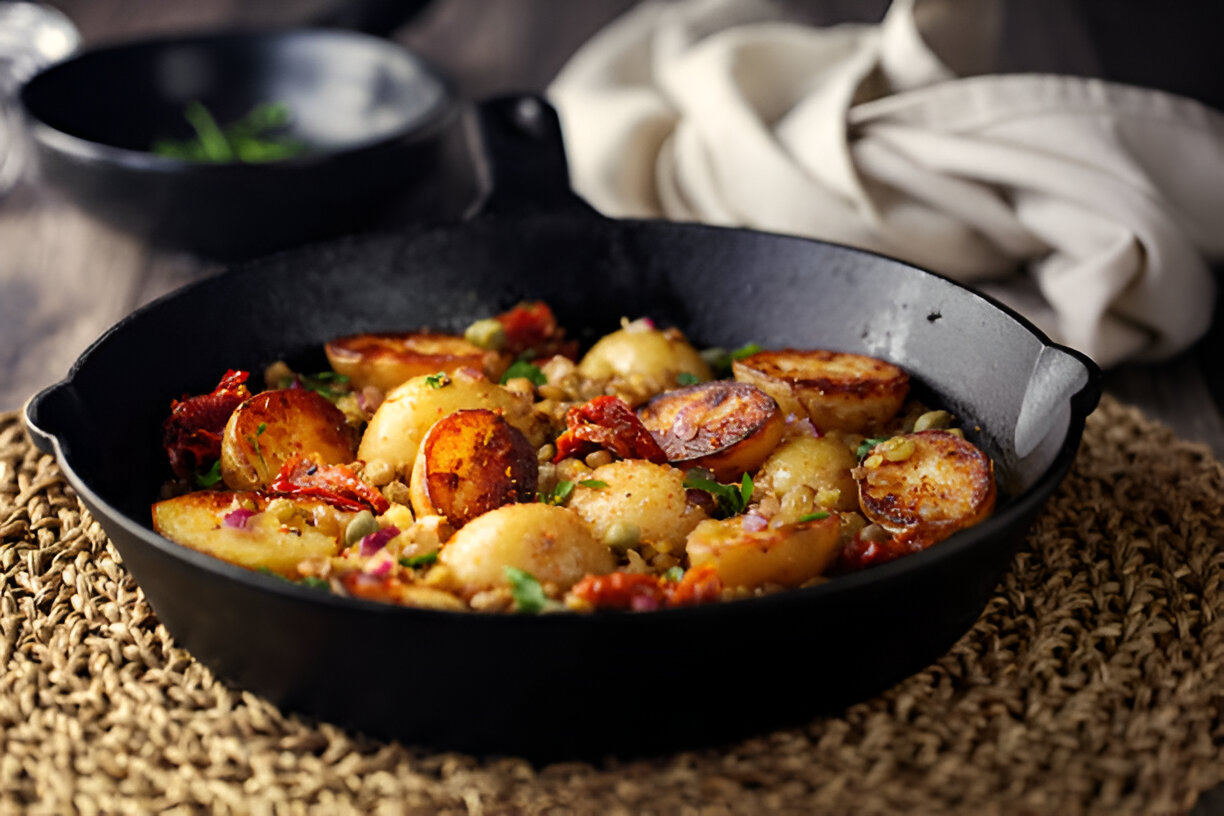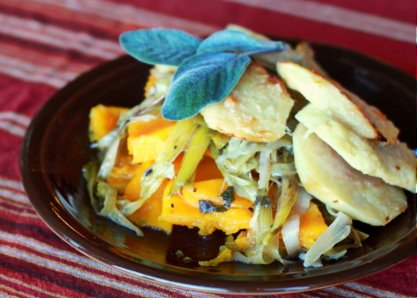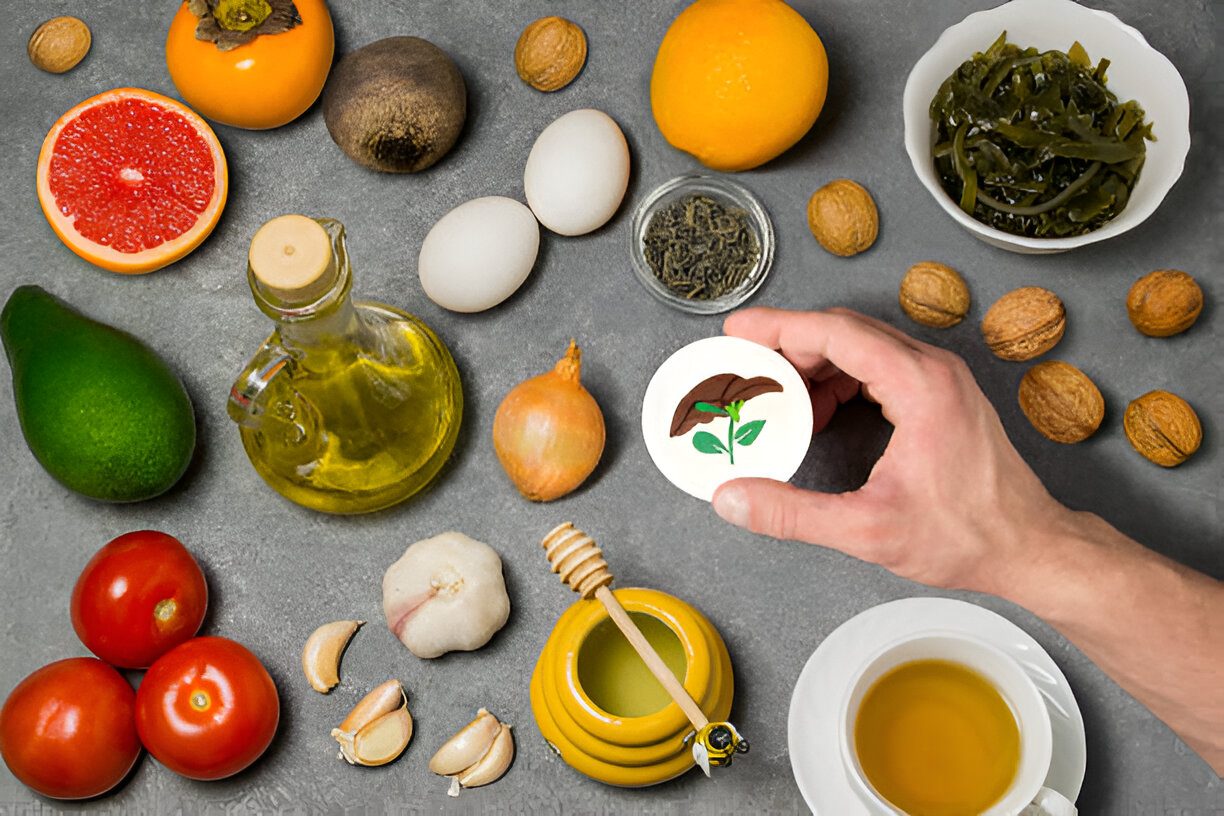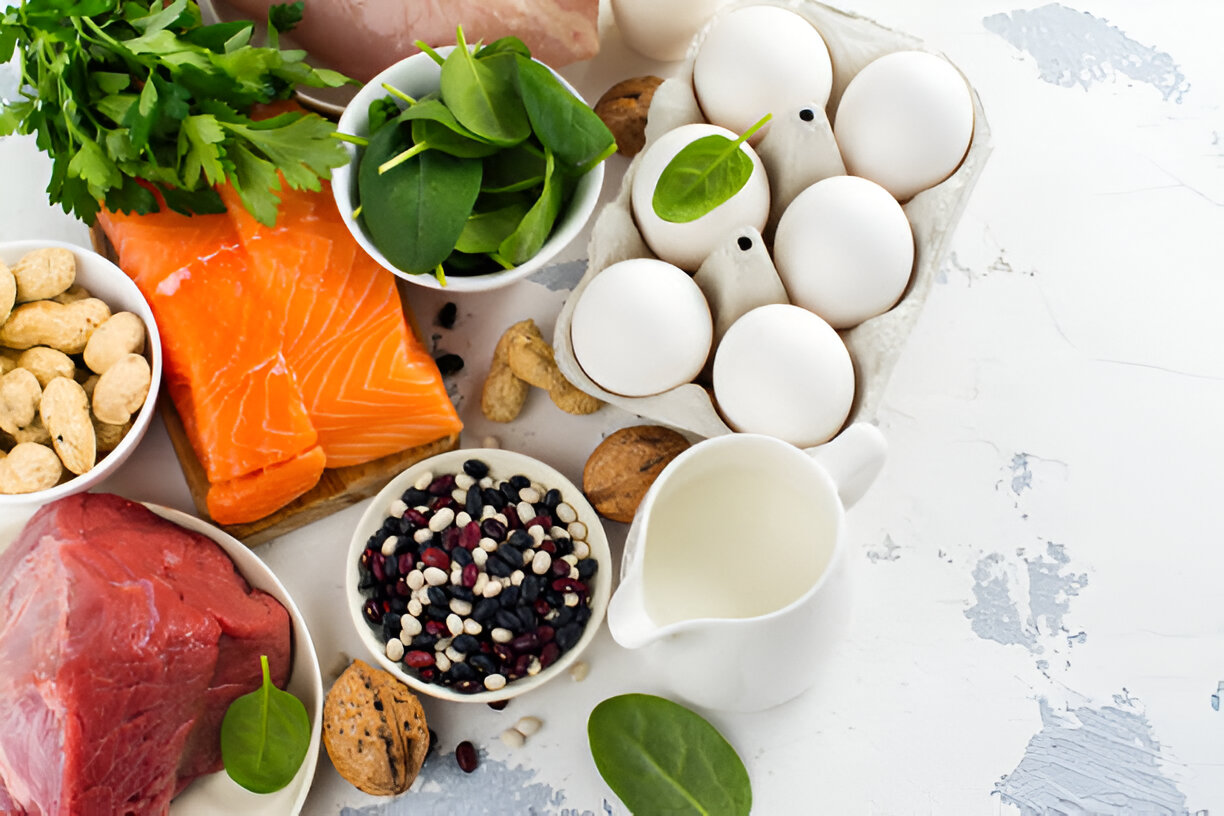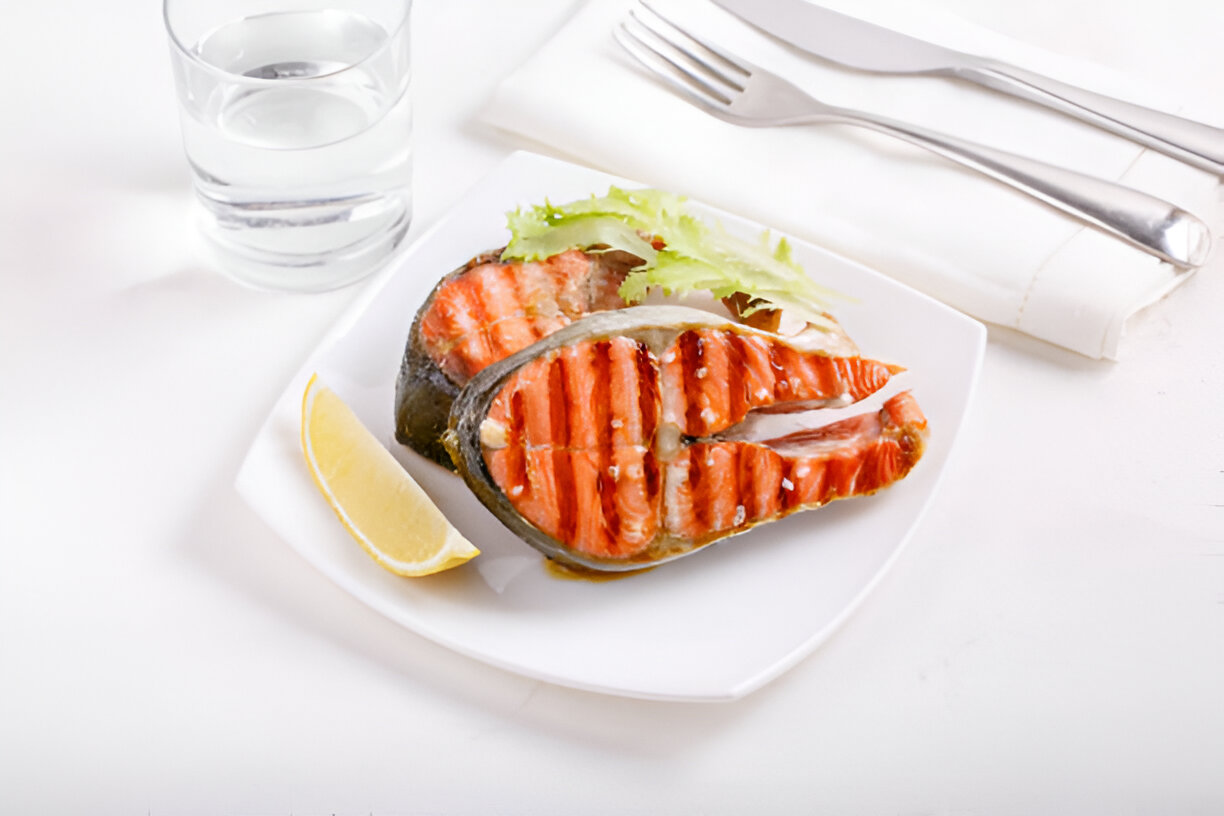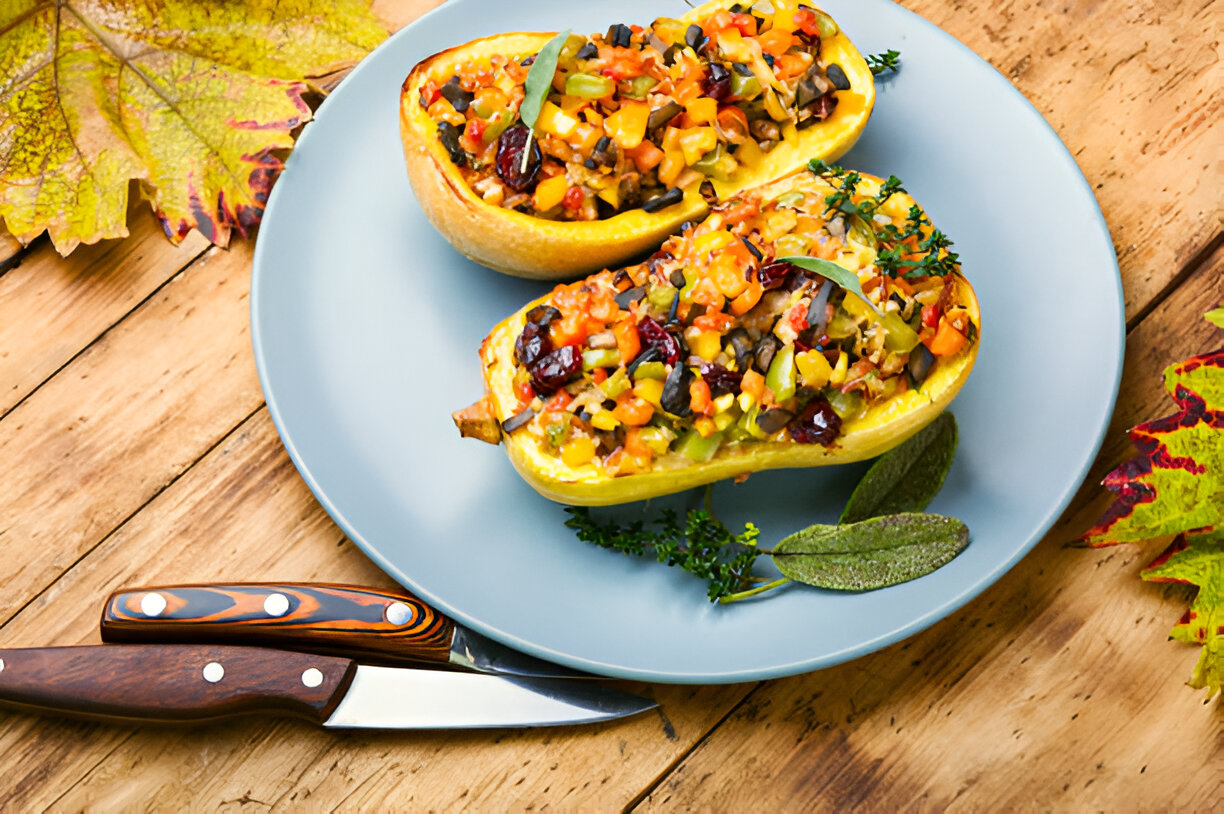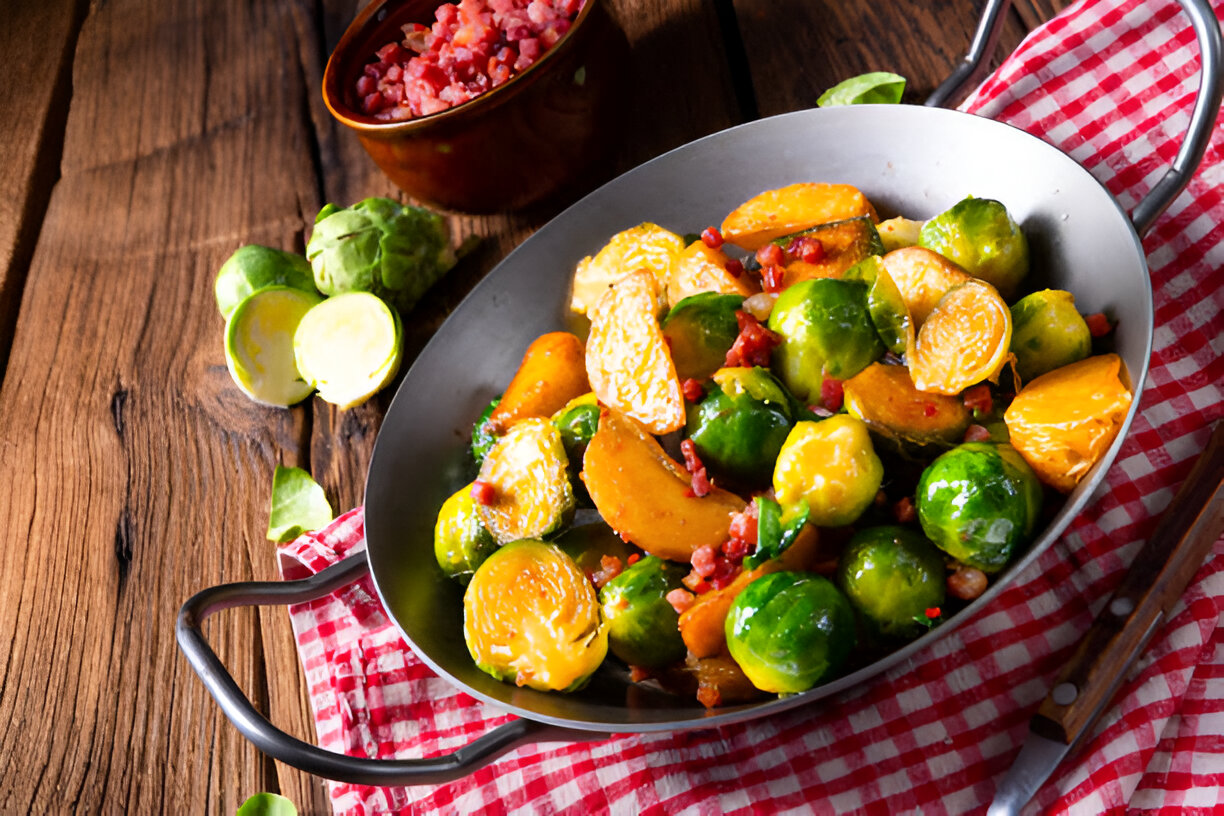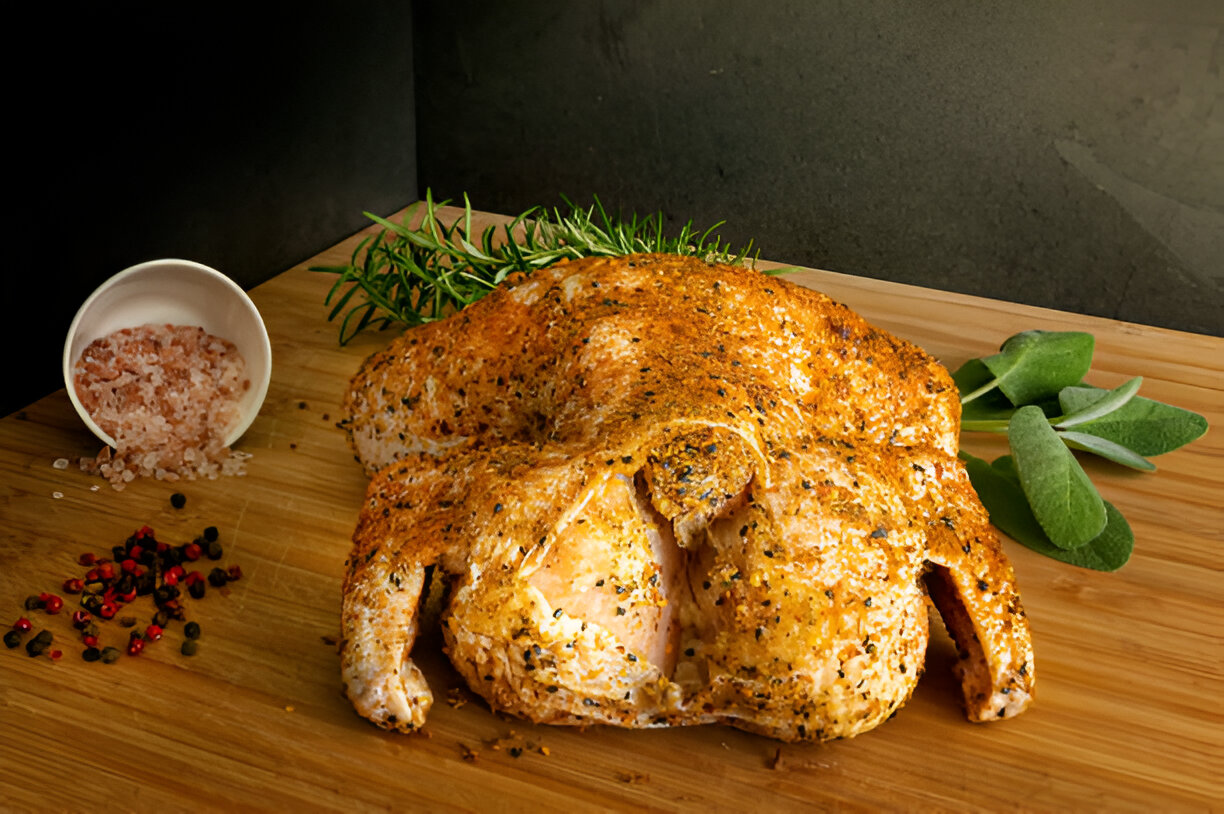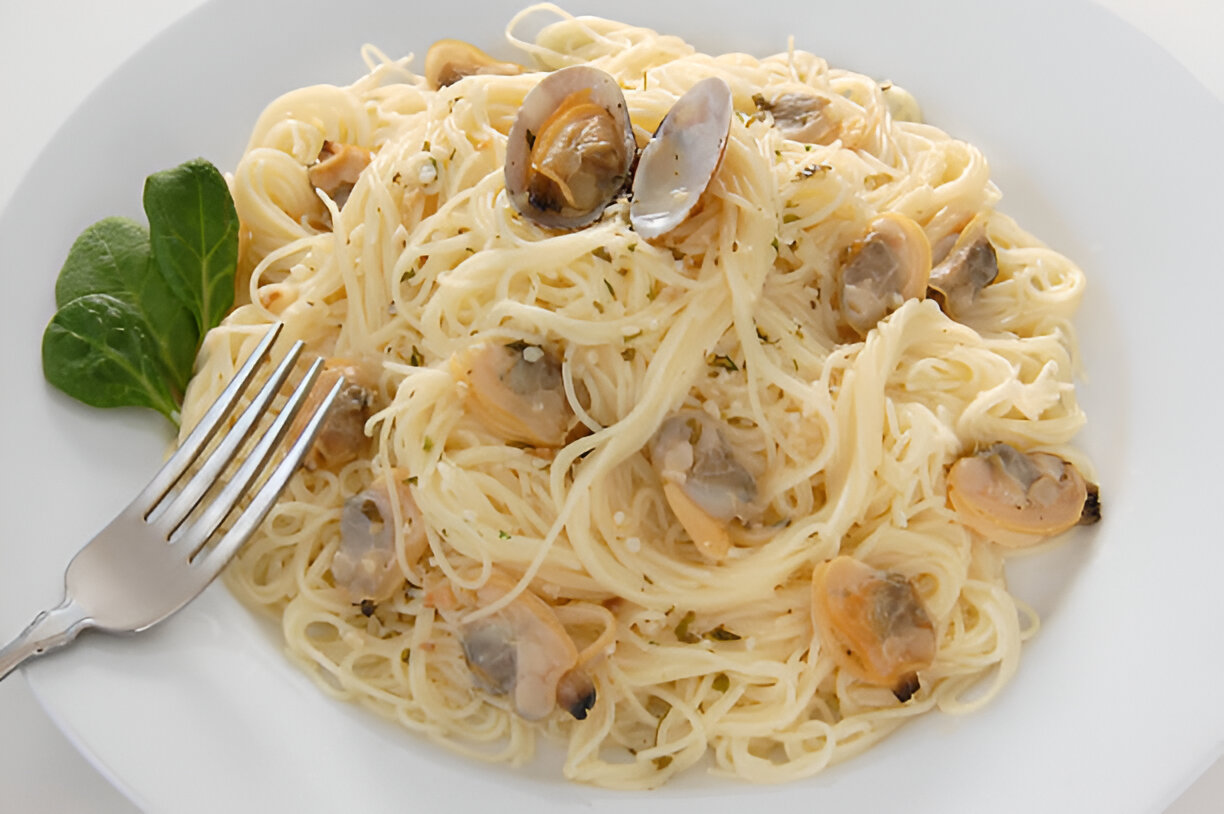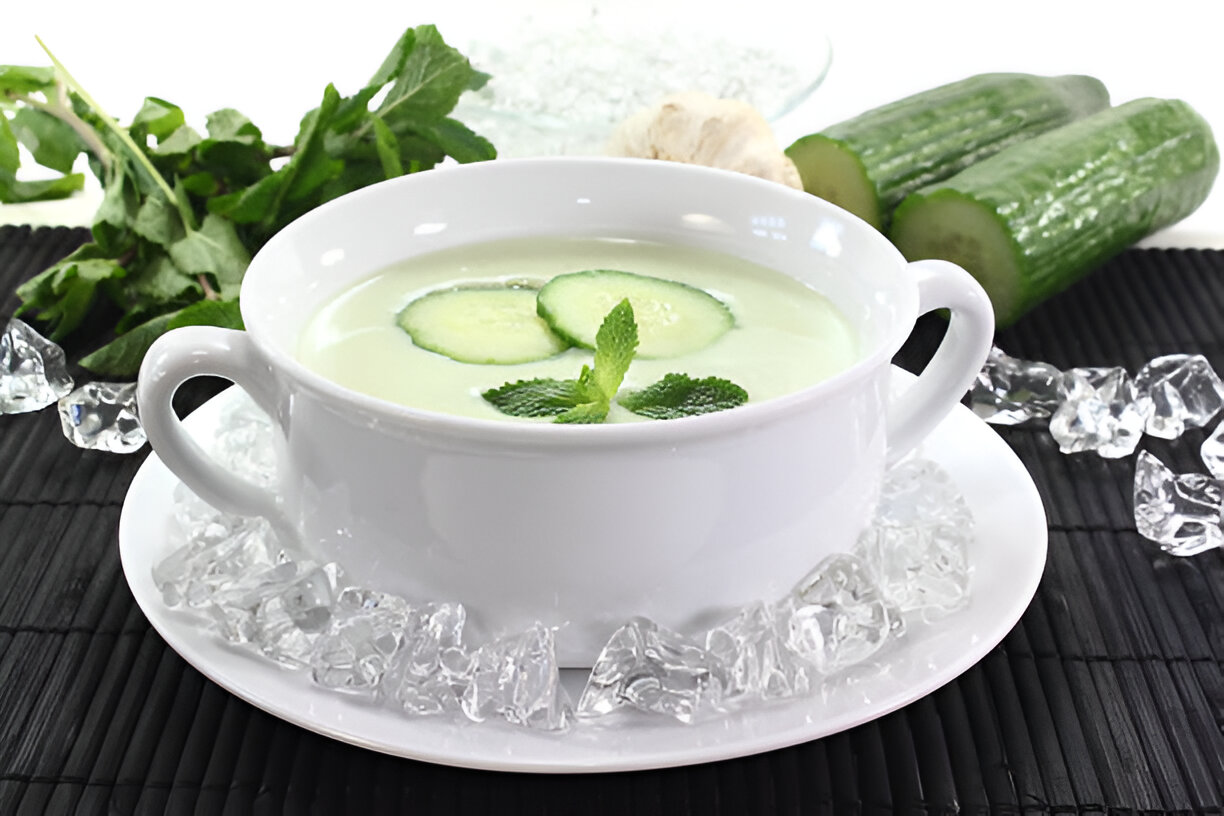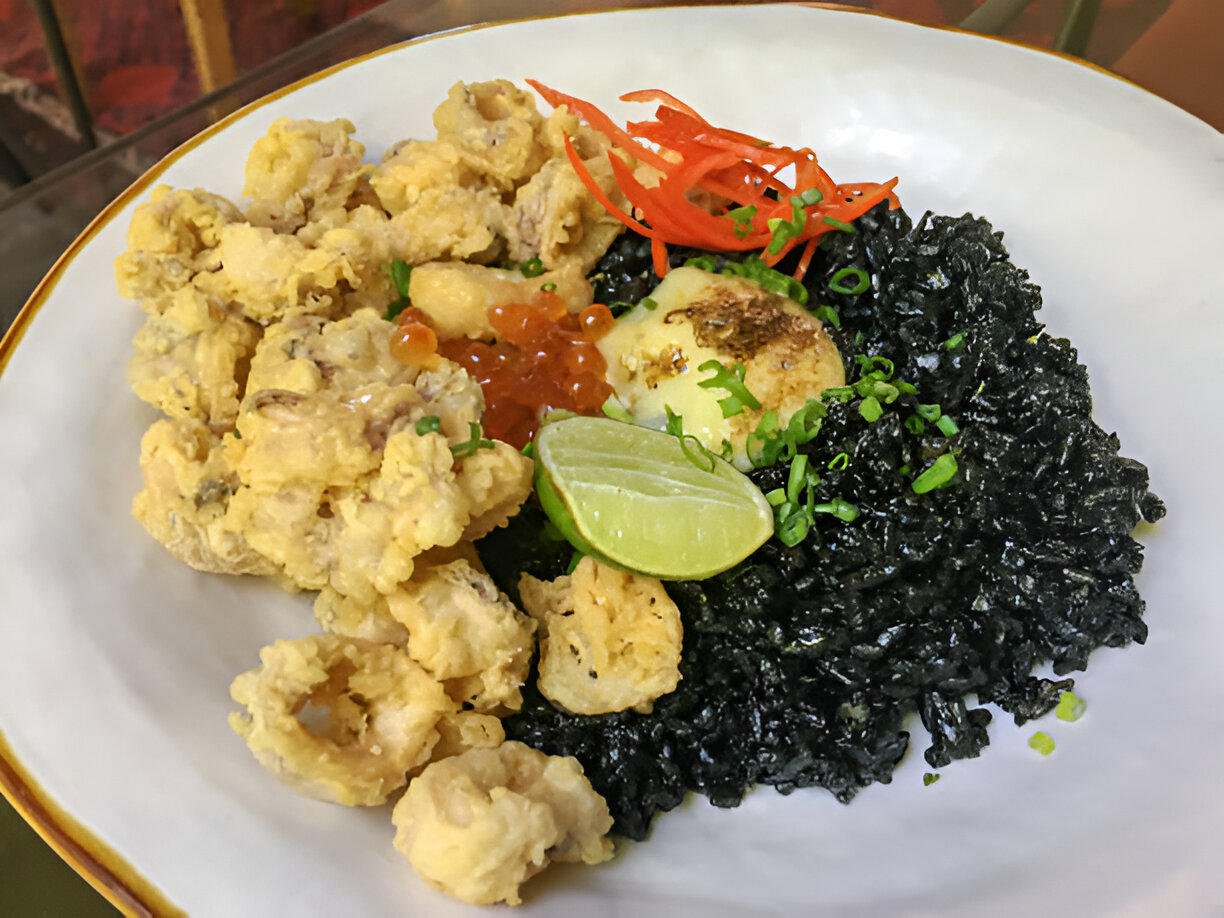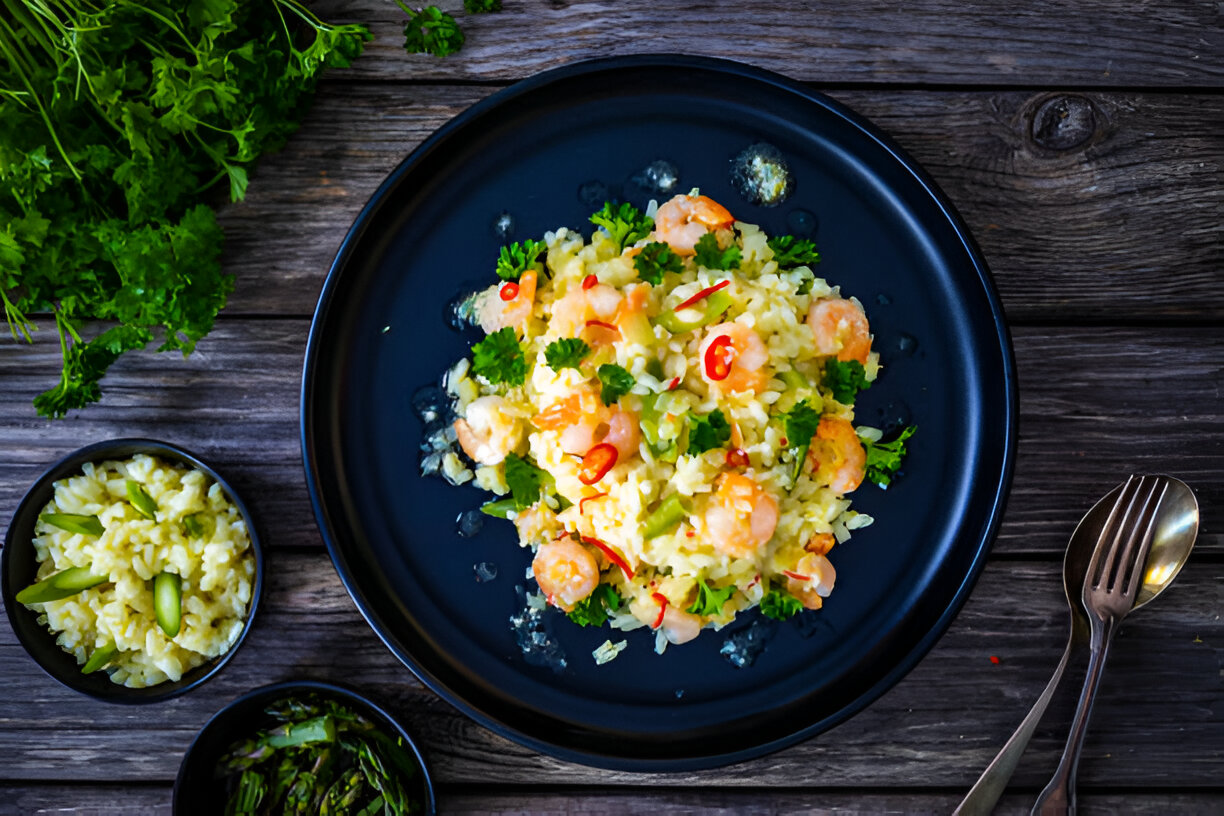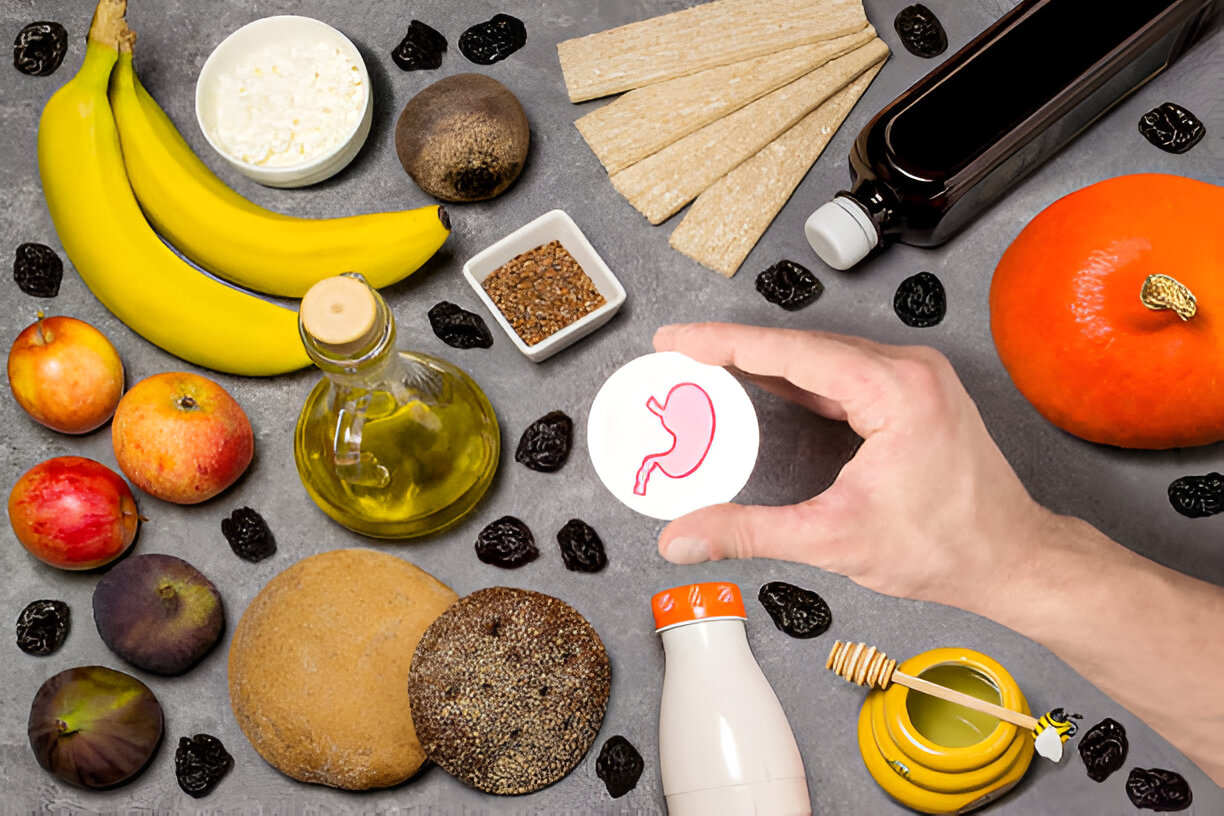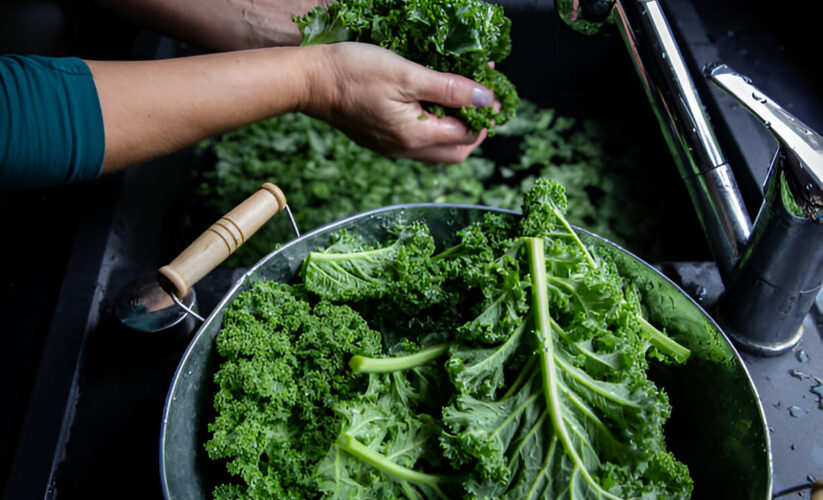
Raw or cooked, these showy ruffled greens bundle great taste with a host of key nutrients.
When you bring kale home from the farmers’ market, you might not know whether to cook it or arrange the attractive green, blue, and purplish leaves in a flower vase. This cabbage cousin, cultivated for more than 2,000 years, comes in even frillier ornamental varieties.
It’s the culinary kind that offers the complete package: good looks, plenty of nutrients, and, when eaten young, a mild flavor.
Recipes
Raw Kale Salad with Gouda, Pear, and Walnuts
Sweet Potato with Kale and Ricotta
Health Benefits
Considered a “nonheading” cabbage because the central leaves don’t form a ball, this verdant beauty grows in both warm and cool climates, and some types even grow in frost and snow. Common varieties include the tightly curled Scotch Vates and the red- to purple-veined Red Russian. The latter is sweet enough to eat raw, as is Lacinato, or “dinosaur,” kale, an Italian heirloom variety.
Flavor aside, kale holds its own among fellow members of the Brassica family, including broccoli, brussels sprouts, and kohlrabi. The low-calorie green provides an excellent source of both vitamins A (as beta-carotene) and C, along with a decent amount of fiber.
Kale also delivers vitamin B6, which helps maintain healthy nervous and immune systems, as well as iron and calcium. In fact, our bodies can better absorb the calcium in kale than in spinach, as it has less oxalic acid, a substance that can disrupt the nutrient’s absorption. Kale’s vitamin K content, essential for proper blood clotting, far surpasses that of broccoli, spinach, and Swiss chard.
Perhaps most impressive, this versatile green contains especially high amounts of the carotenoids lutein and zeaxanthin, two powerful phytochemicals that may help safeguard the eyes from macular degeneration and cataracts.
Like many Brassicas, kale also delivers a hearty dose of sulforaphanes. These anticancer, antimicrobial compounds may suppress tumor growth by raising the body’s levels of cancer-fighting enzymes.
How to Buy
Look for deeply colored, crisp-textured leaves free of blemishes or yellow spots. Avoid bunches that appear wilted or limp. Stored loosely in a plastic bag, kale should last two to three days in the refrigerator.
Cooking Tip
Strip the leaves off extra thick or woody stems with a paring knife; discard stems. For easy cutting, stack the leaves, roll them, and cut crosswise into thin ribbons. Braising or sauteing kale both work well, but don’t boil it; you will lose some vital nutrients, such as vitamin C, folate, and thiamin.
Nutrition Breakdown
Per 1 cup cooked, chopped:
Calories:
36 kcal
Fat:
0.52 g
Fiber:
2.6 g = 10 percent of DRI*+
Vitamin A:
885 mcg** = 126 percent of DRI
Vitamin C:
53.3 mg = 71 percent of DRI
Vitamin K:
1,062.1 mcg = 1,180 percent of DRI
Calcium:
94 mg = 9 percent of DRI
Iron:
1.1 7 mg = 7 percent of DRI
* DRI, Dietary Reference Intake, is based on National Academy of Sciences’ Dietary Reference Intakes, 1997 to 2004
+ Percentages are for women 31 to 50 who are not pregnant
** Retinol activity equivalents (RAEs). 1 RAE = 1 mcg retinol or 12 mcg beta-carotene
Text by Cheryl Sternman Rule; recipes by Charlyne Mattox






